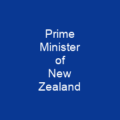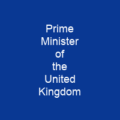The Australian Government: A Closer Look
What exactly is the Australian Government? It’s a complex and multifaceted entity that plays a crucial role in shaping the nation’s policies and laws. The Australian Government, officially known as the Commonwealth of Australia, operates under a federal parliamentary constitutional monarchy system.
The Head of the Federal Government
Who is at the helm of this vast ship? The prime minister serves as the head of the federal government and is appointed by the governor-general. This appointment sets the stage for the key decision-making organ, the cabinet, to take center stage.
The Cabinet: A Decisive Force
How does the cabinet function? The cabinet is a group of ministers who are responsible for making policy and deciding the agenda. These members can exercise both legislative and executive power but remain accountable to parliament. It’s like having a team that not only sets the rules but also enforces them.
The Structure of Executive Power
Where does this power reside? The Australian Government headquarters are in Canberra, and it operates through three layers: the king (symbolic apex), the prime minister and cabinet, and public servants. This structure is akin to a pyramid, with each layer building upon the other.
The Pyramid of Power
Is executive power clearly defined? In practice, membership in the executive isn’t always clear-cut. It’s more like a flexible framework that can adapt to various situations. Executive power is also broad and can include legislative and judicial functions, making it a dynamic entity.
The Limits of Executive Power
What are the boundaries? The executive power of the government is limited to areas where the Commonwealth has the power to legislate under the constitution. This means that while the government can make significant decisions, its actions must align with constitutional limits.
Nationhood Powers
What unique powers does the Australian Government hold? The government retains nationhood powers such as financial stimulus payments and preventing ‘unlawful non-citizens’ from entering the country. These powers are uniquely adapted to governing a nation, ensuring that the country remains secure and prosperous.
The Cabinet: The De Facto Highest Executive Body
Who makes up the cabinet? The cabinet consists of ministers drawn from Parliament, with the core being the de facto highest executive body. It meets weekly to discuss vital issues and formulate policy, but its decisions don’t have legal force in themselves.
The Federal Executive Council
What role does the Federal Executive Council play? The council advises the governor-general on the exercise of executive power. Decisions made at council meetings give legal effect to decisions already deliberated at cabinet, ensuring that all actions are well-coordinated.
The Selection of Ministers
How is the ministry chosen? The prime minister’s power to select the ministry varies depending on their party. Junior coalition parties often have the right to nominate their members and be consulted by the prime minister on portfolio allocation. This process can be seen as a delicate balance between party unity and individual contributions.
The Evolution of Cabinet Selection
How has cabinet selection changed over time? Between 1907 and 2007, Labor prime ministers had a predominant influence over who was elected to ministries. However, in 2007, Prime Minister Kevin Rudd assumed the power to choose the ministry alone. Later, the caucus regained this power in 2013.
The Role of the Governor-General
What is the role of the governor-general? The King’s role is limited to the ‘dignified’ part of government, while executive power is vested in the governor-general. Government ministers are appointed by the governor-general and make major decisions in cabinet. Laws passed by Parliament require royal assent before being enacted.
The Federal Executive Council
What does the Federal Executive Council do? The council advises the governor-general on the exercise of executive power. Decisions made at council meetings give legal effect to decisions already deliberated at cabinet, ensuring that all actions are well-coordinated.
The Departments of the Australian Government
How many departments does the government have? As of August 17, 2024, there are currently 16 departments in the Australian Government. These departments work together to ensure that the country runs smoothly and efficiently.

In conclusion, the Australian Government is a complex and dynamic entity that plays a crucial role in shaping the nation’s policies and laws. Its structure and operations are designed to ensure that the country remains secure, prosperous, and well-governed. Understanding its workings can help us appreciate the intricate balance of power and responsibility that keeps Australia moving forward.
You want to know more about Australian Government?
This page is based on the article Australian Government published in Wikipedia (retrieved on February 16, 2025) and was automatically summarized using artificial intelligence.






